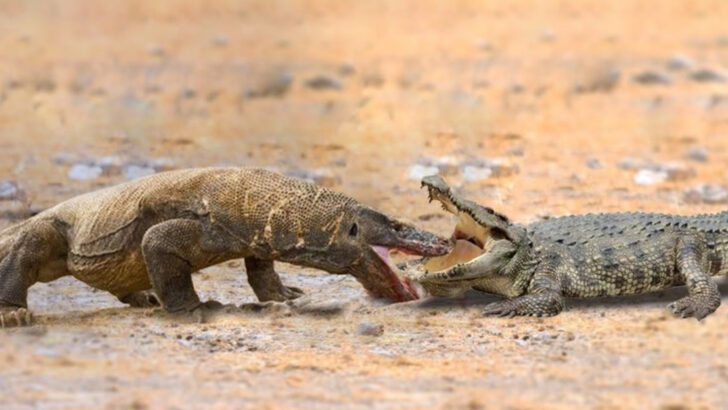Crocodile vs. Komodo dragon—who really rules the wild?
This isn’t some nature documentary where everyone gets along and learns a lesson. This is a clash of ancient beasts, built to hunt, kill, and dominate their turf.
One is a prehistoric tank with a jaw pressure strong enough to crush bone. The other? A venomous lizard with stealth, speed, and a bite that slowly ends you.
They’re both terrifying. They’re both fascinating. But only one can wear the crown.
We’re diving into 12 savage facts that pit these two apex predators head-to-head—fangs, claws, and brute force included. Let the wild showdown begin.
Bite Force
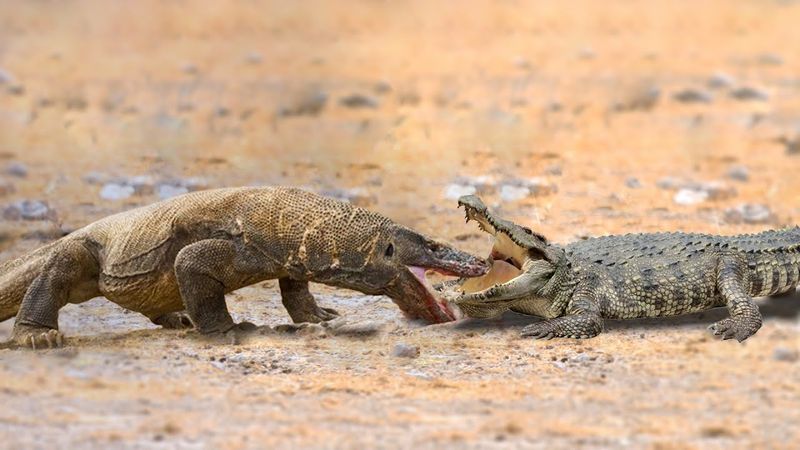
The crocodile’s bite force is legendary, reaching up to 3,700 pounds per square inch. This is one of the most powerful bites in the animal kingdom.
In contrast, the Komodo dragon’s bite force is much weaker, but it compensates for this with its venomous bite. These reptiles have evolved to dominate their respective environments.
Their jaw strength is a result of millions of years of evolution, perfecting a mechanism designed to clamp down on prey with unparalleled power. It’s a testament to their status as top-tier predators.
Venomous Bite
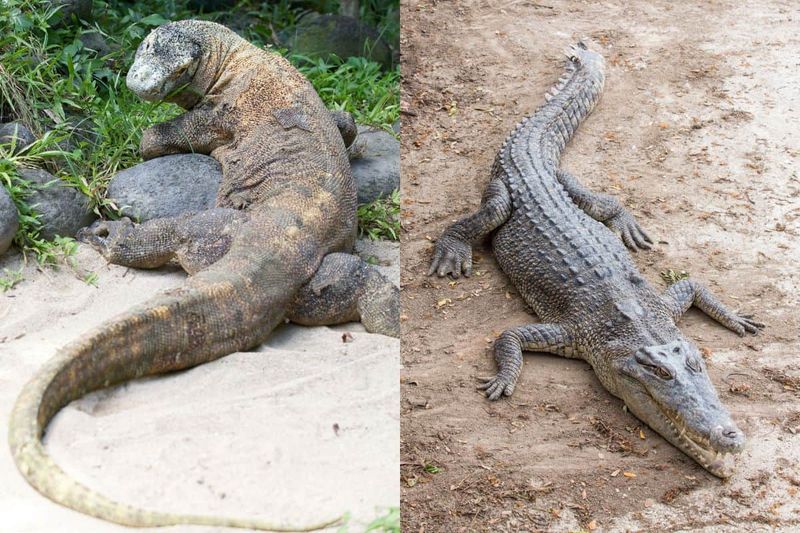
While the crocodile relies on brute force, the Komodo dragon has evolved a venomous bite to subdue its prey. Unlike most reptiles, the Komodo dragon’s saliva contains potent venom that causes shock and blood loss.
This adaptation allows it to tackle larger prey, ensuring a successful hunt. The venom’s effect is gradual, allowing the dragon to follow its prey until it succumbs.
It’s a unique evolutionary trait that highlights the Komodo dragon’s cunning hunting strategy and enhances its ability to capture and consume prey.
Size Comparison
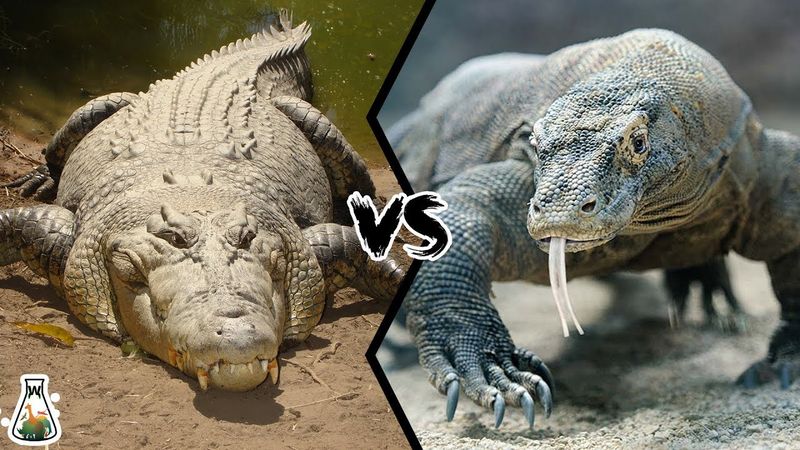
Crocodiles can grow up to 23 feet in length, making them one of the largest reptiles on Earth. Komodo dragons, while impressive, are smaller, reaching lengths of about 10 feet.
This size difference influences their hunting strategies and prey choices. Crocodiles can tackle larger animals, while Komodo dragons are ambush predators. The size advantage of crocodiles is evident in their ability to overpower larger prey with ease.
It demonstrates how size can be a critical factor in the survival and dominance of these predators.
Hunting Techniques
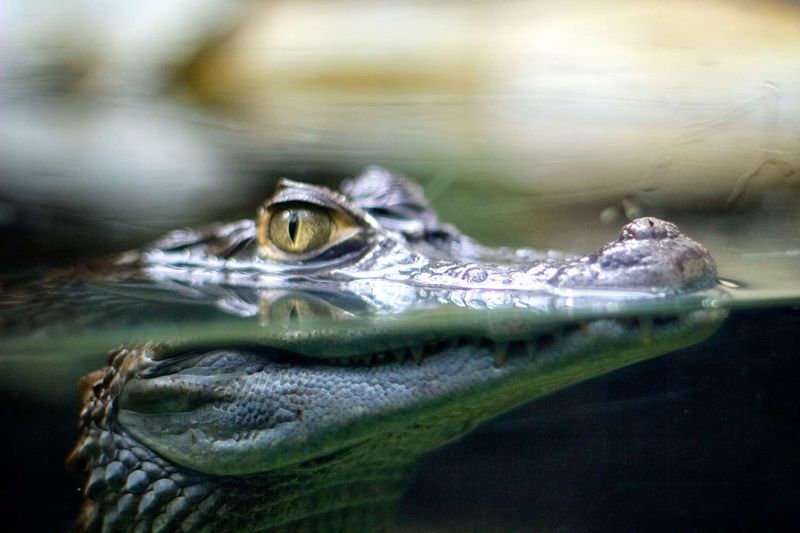
Crocodiles are ambush predators, relying on stealth and surprise. They lie in wait, often submerged, for unsuspecting prey to approach. On the other hand, Komodo dragons are more active hunters, using their keen sense of smell to track down prey.
They can sense carrion from miles away. Once a target is chosen, they strike with speed and precision. These differing techniques highlight the adaptability of both animals to their environments.
Each has honed its hunting style to perfection, ensuring they remain effective predators.
Habitat Adaptations
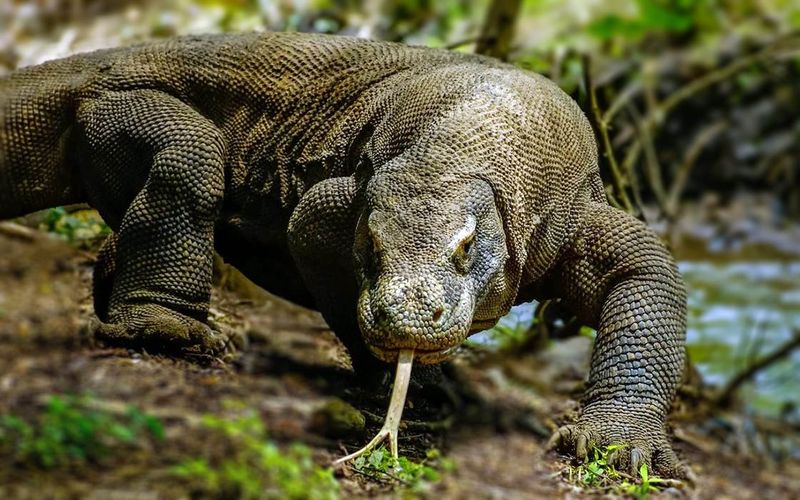
The crocodile’s adaptability to various aquatic environments is remarkable. They thrive in rivers, lakes, and swamps, often dominating these habitats. In contrast, Komodo dragons are specialized for life in Indonesia’s dry, arid landscapes.
Their ability to conserve water and withstand heat makes them well-suited for such environments. These adaptations reflect the evolutionary paths that have equipped each predator with the tools needed to survive and succeed in its respective habitat.
It showcases nature’s ingenuity in crafting specialized survivors.
Lifespan and Longevity
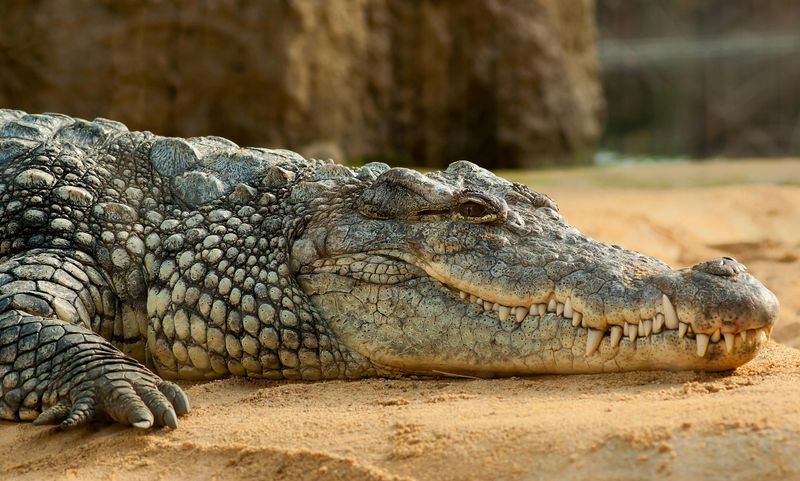
Crocodiles can live over 70 years, showcasing incredible longevity in their natural habitats. Their long lifespan allows them to dominate territories for decades.
Komodo dragons, while not as long-lived, can reach ages up to 30 years. This longevity is essential for maintaining their role in the ecosystem as top predators. Both creatures have adapted life strategies that maximize their survival over the years.
The extended lifespan of crocodiles, in particular, highlights their resilience and ability to thrive in various environmental conditions.
Reproductive Strategies

Crocodiles are known for their protective nature when it comes to their offspring. They guard their nests fiercely, ensuring the next generation’s survival. In contrast, Komodo dragons lay their eggs in hidden nests, leaving them to incubate without direct protection.
This difference in reproductive strategies is fascinating. While crocodiles invest heavily in offspring survival, Komodo dragons rely on stealth and seclusion.
These strategies reflect each predator’s adaptation to its environment and resources, ensuring the continuation of their lineage.
Diet and Prey
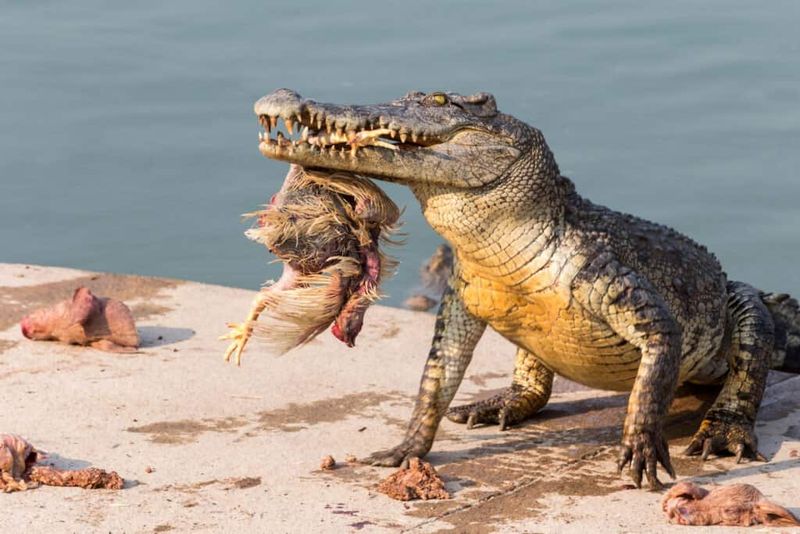
Crocodiles have a diverse diet, consuming fish, birds, and mammals. They are opportunistic feeders, taking advantage of any available prey. Komodo dragons also have varied diets, often feeding on carrion but capable of hunting live prey.
Their ability to detect dead animals from miles away is remarkable. This dietary flexibility allows both species to thrive in their respective environments.
Their feeding habits are integral to their roles as apex predators. The adaptability in their diets highlights their capacity to exploit available resources efficiently.
Speed and Agility
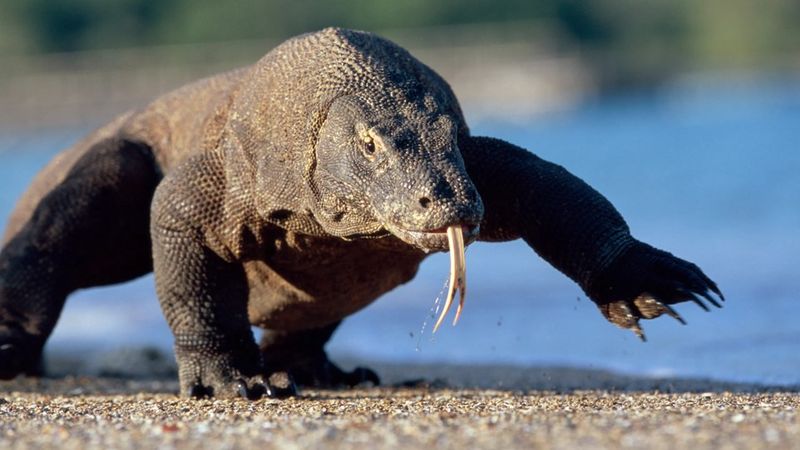
Despite their size, crocodiles can burst out of water with incredible speed to catch prey. This sudden agility is a critical aspect of their hunting strategy. Komodo dragons, meanwhile, are surprisingly fast on land, capable of running at speeds up to 13 mph.
This speed is essential for catching prey and evading threats. The agility of both predators underscores their prowess as hunters.
Whether in water or on land, their ability to move swiftly ensures they remain effective in capturing prey and maintaining dominance in their habitats.
Behavioral Traits

Crocodiles are often seen basking in groups, displaying social behaviors that are unusual for reptiles. This social aspect is crucial for thermoregulation and protection.
Conversely, Komodo dragons are solitary creatures, preferring to hunt and live alone. Their solitary nature is advantageous in their harsh environments, reducing competition for food.
This contrast in behavior highlights the adaptability of each species to its environment. While crocodiles benefit from social interactions, Komodo dragons thrive with independence, showcasing diverse survival strategies.
Defensive Mechanisms
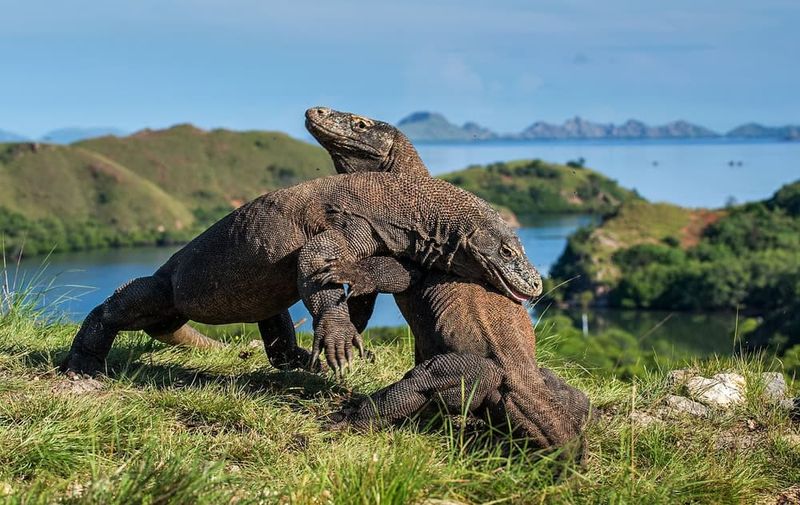
Crocodiles employ the infamous death roll, a technique to subdue prey by spinning rapidly. This disorients and drowns the prey, making it easier to consume.
Komodo dragons, on the other hand, utilize their powerful tails as whips, defending against threats. These defensive mechanisms are evolutionary marvels, providing each predator with distinct survival advantages.
The death roll’s effectiveness is well-documented, while the Komodo dragon’s tail whip showcases its adaptability in combating threats. These strategies ensure their continued dominance in their respective habitats.
Cultural Significance
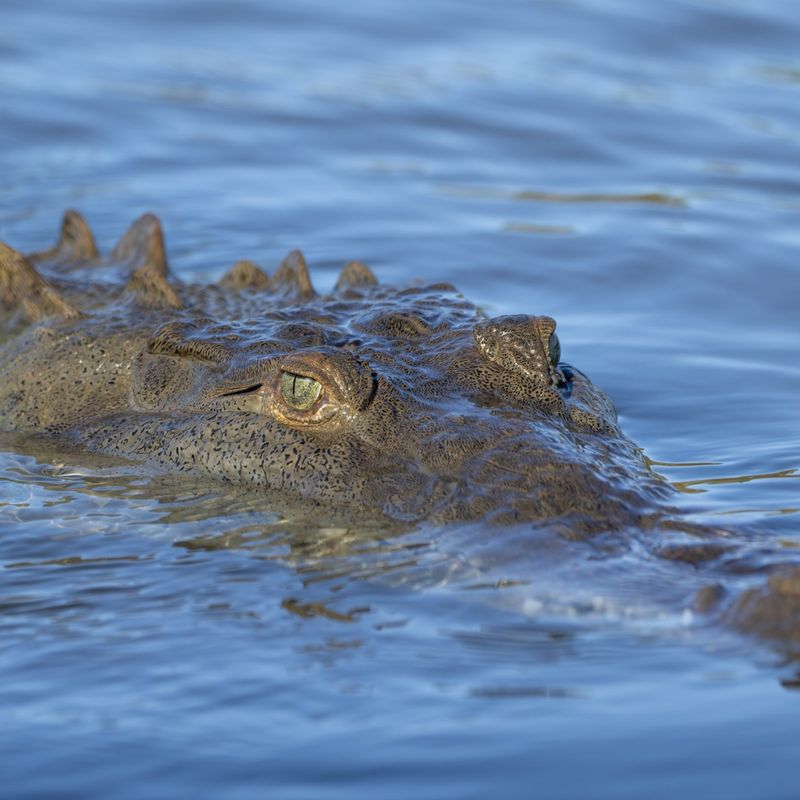
Crocodiles hold significant cultural value in many societies, often symbolizing strength and power in indigenous art. They are revered and feared, embodying the untamed force of nature.
Komodo dragons, native to Indonesia, feature prominently in local mythology, often considered sacred creatures. This cultural significance reflects humanity’s enduring fascination with these predators.
Both animals inspire awe and respect, symbolizing nature’s raw power and mystery. Their presence in folklore and mythology underscores their impact on human culture and the natural world.

